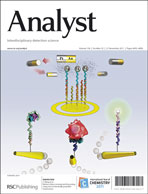Electrochemically-propelled nanomotors offer considerable promise for developing new and novel bioanalytical and biosensing strategies based on the direct isolation of target biomolecules or changes in their movement in the presence of target analytes. For example, receptor-functionalized nanomotors offer direct and rapid target isolation from raw biological samples without preparatory and washing steps. Microtube engines functionalized with ss-DNA, aptamer or antibody receptors are particularly useful for the direct isolation of nucleic acids, proteins or cancer cells, respectively. A new nanomotor-based signal transduction involving measurement of speed and distance travelled by nanomotors, offers highly sensitive, rapid, simple and low cost detection of target biomarkers, and a new dimension of analytical information based on motion. The resulting distance signals can be easily visualized by optical microscope (without any sophisticated analytical instrument) to reveal the target presence and concentration. The attractive features of the new micromachine-based target isolation and signal transduction protocols reviewed in this article offer numerous potential applications in biomedical diagnostics, environmental monitoring, and forensic analysis.

You have access to this article
 Please wait while we load your content...
Something went wrong. Try again?
Please wait while we load your content...
Something went wrong. Try again?


 Please wait while we load your content...
Please wait while we load your content...